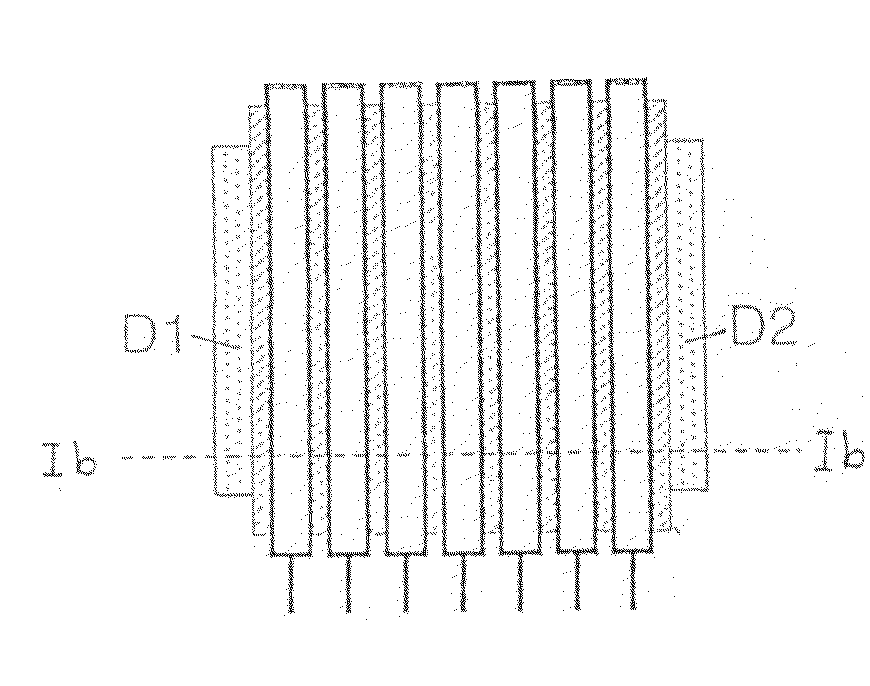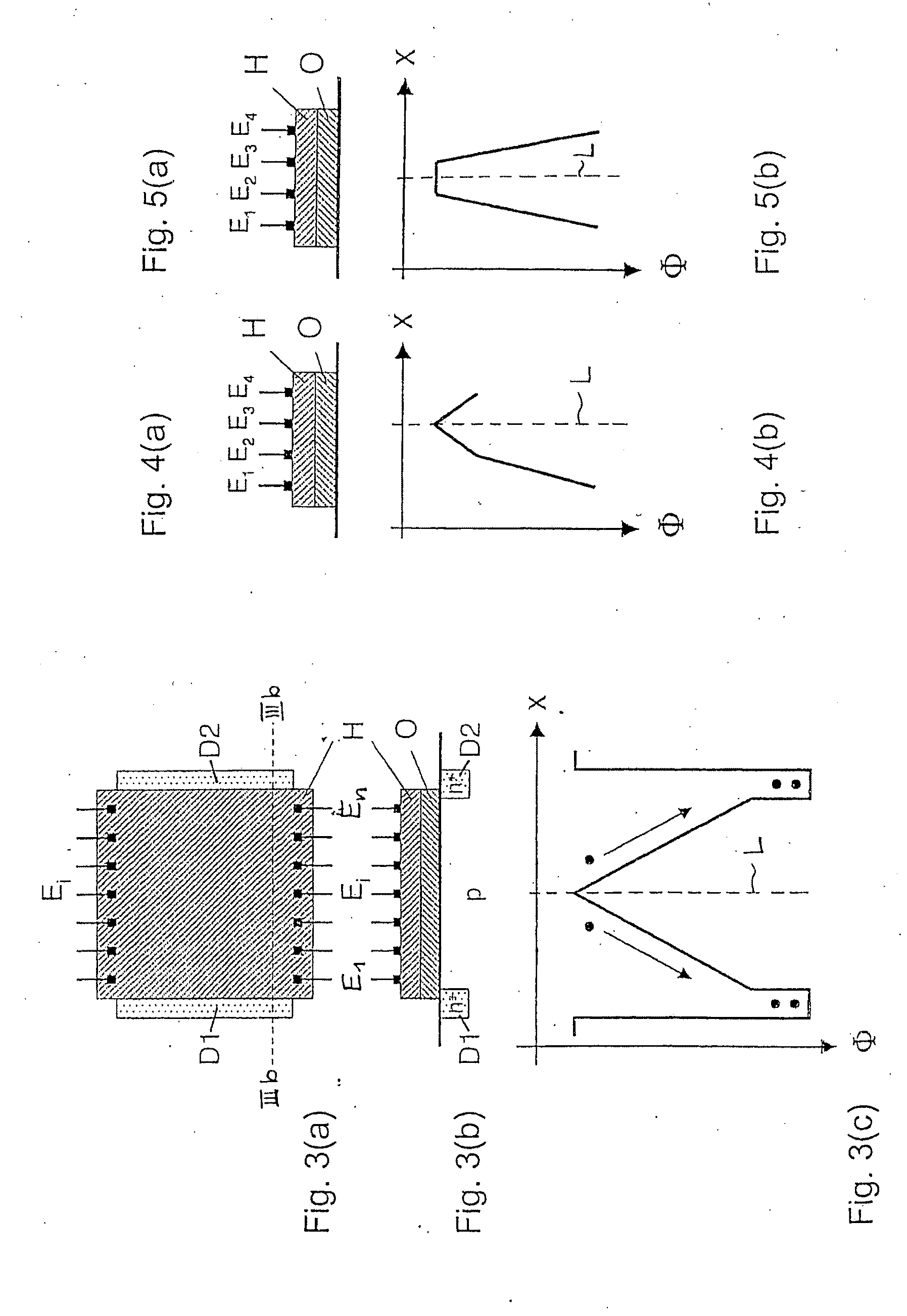Solid-state photosensor with electronic aperture control
- Summary
- Abstract
- Description
- Claims
- Application Information
AI Technical Summary
Benefits of technology
Problems solved by technology
Method used
Image
Examples
Embodiment Construction
[0030]A first embodiment of the photosensor according to the invention is shown in FIG. 1(a) in a top view and in FIG. 1(b) in a cross section. The photosensor makes use of a substrate S made of a semiconductor material such as silicon for the conversion of incident photons into electron-hole pairs. Without loss of generality, we can assume in the following that this semiconductor substrate material is p-doped, and that we want to detect photoelectrons as minority charge carriers in the semiconductor material. All subsequent arguments can be suitably modified to hold true for the detection of photogenerated holes as minority carriers in n-doped semiconductor material.
[0031]The semiconductor substrate S is covered with a preferably transparent insulator layer O, preferably an oxide, as available in industry standard CMOS processes. The thickness of the insulator layer O may vary between 1 nm and 1 μm. Thinner insulator layers O let a larger part of electric surface fields pass throug...
PUM
 Login to View More
Login to View More Abstract
Description
Claims
Application Information
 Login to View More
Login to View More - R&D
- Intellectual Property
- Life Sciences
- Materials
- Tech Scout
- Unparalleled Data Quality
- Higher Quality Content
- 60% Fewer Hallucinations
Browse by: Latest US Patents, China's latest patents, Technical Efficacy Thesaurus, Application Domain, Technology Topic, Popular Technical Reports.
© 2025 PatSnap. All rights reserved.Legal|Privacy policy|Modern Slavery Act Transparency Statement|Sitemap|About US| Contact US: help@patsnap.com



